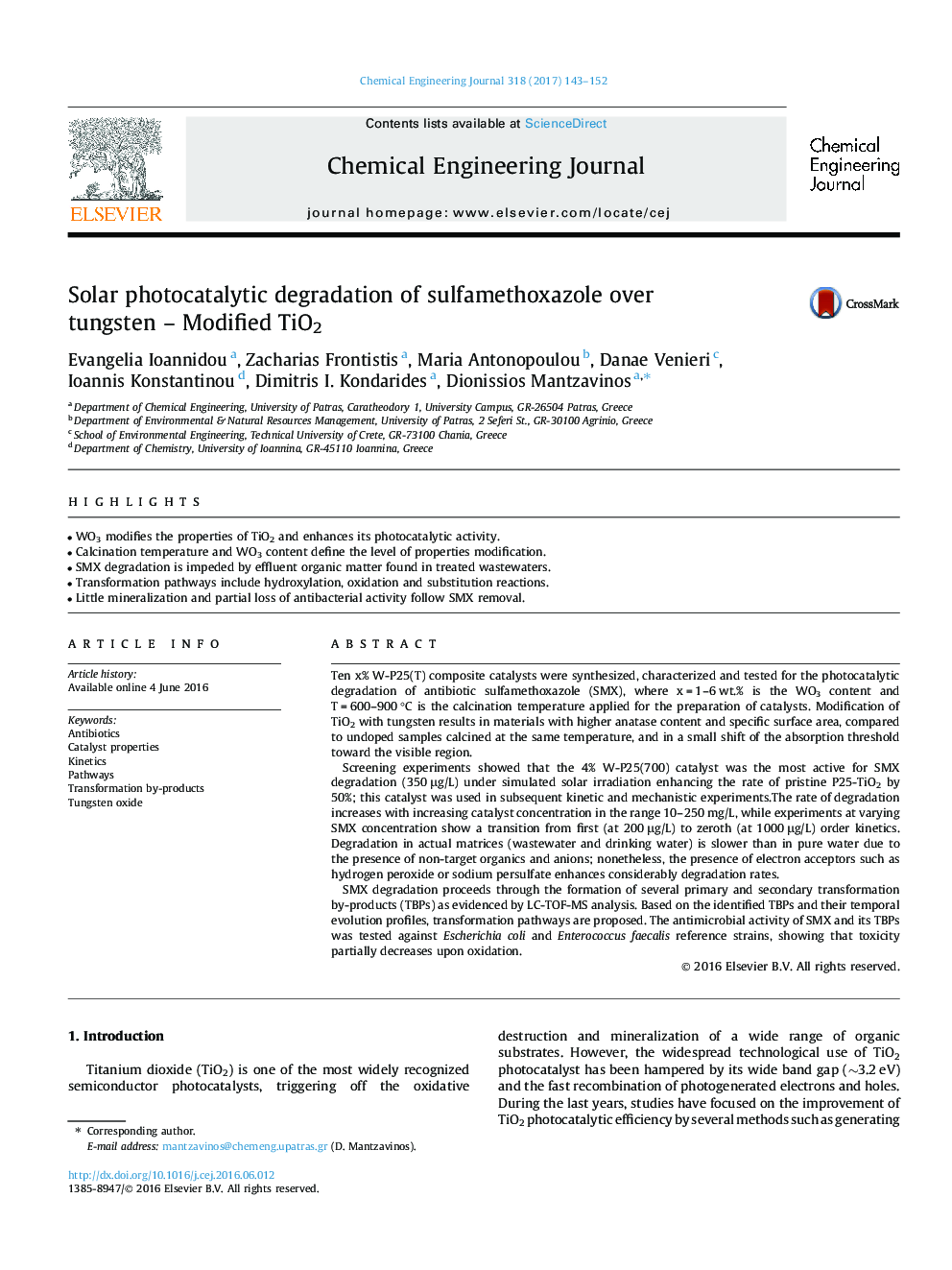| Article ID | Journal | Published Year | Pages | File Type |
|---|---|---|---|---|
| 6466258 | Chemical Engineering Journal | 2017 | 10 Pages |
â¢WO3 modifies the properties of TiO2 and enhances its photocatalytic activity.â¢Calcination temperature and WO3 content define the level of properties modification.â¢SMX degradation is impeded by effluent organic matter found in treated wastewaters.â¢Transformation pathways include hydroxylation, oxidation and substitution reactions.â¢Little mineralization and partial loss of antibacterial activity follow SMX removal.
Ten x% W-P25(T) composite catalysts were synthesized, characterized and tested for the photocatalytic degradation of antibiotic sulfamethoxazole (SMX), where x = 1-6 wt.% is the WO3 content and T = 600-900 °C is the calcination temperature applied for the preparation of catalysts. Modification of TiO2 with tungsten results in materials with higher anatase content and specific surface area, compared to undoped samples calcined at the same temperature, and in a small shift of the absorption threshold toward the visible region.Screening experiments showed that the 4% W-P25(700) catalyst was the most active for SMX degradation (350 μg/L) under simulated solar irradiation enhancing the rate of pristine P25-TiO2 by 50%; this catalyst was used in subsequent kinetic and mechanistic experiments.The rate of degradation increases with increasing catalyst concentration in the range 10-250 mg/L, while experiments at varying SMX concentration show a transition from first (at 200 μg/L) to zeroth (at 1000 μg/L) order kinetics. Degradation in actual matrices (wastewater and drinking water) is slower than in pure water due to the presence of non-target organics and anions; nonetheless, the presence of electron acceptors such as hydrogen peroxide or sodium persulfate enhances considerably degradation rates.SMX degradation proceeds through the formation of several primary and secondary transformation by-products (TBPs) as evidenced by LC-TOF-MS analysis. Based on the identified TBPs and their temporal evolution profiles, transformation pathways are proposed. The antimicrobial activity of SMX and its TBPs was tested against Escherichia coli and Enterococcus faecalis reference strains, showing that toxicity partially decreases upon oxidation.
